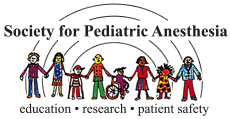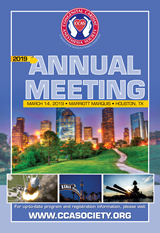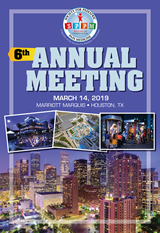General Information
EDUCATION MISSION STATEMENT
The annual Winter/Spring Meeting will focus on topics of interest to those who provide anesthesia, sedation, pain management, and critical care services to infants and children. The overall goals of this program are to: enable attendees to reinforce their existing fund of knowledge; to introduce them to new, state-of-the-art techniques; and to provide them with information that will improve the perioperative care of children.
SCOPE & TYPES OF ACTIVITIES
The program brings together experts from clinical and basic science disciplines related to pediatric medicine, anesthesia, and surgery. General topic areas include anatomy, pathophysiology, anesthetic pharmacology, sedation, pain management, patient safety, and child advocacy. We will also discuss practice and career management issues. The presentation format is varied, and includes lectures and refresher courses, panel discussions, hands-on workshops and problem-based learning discussions. Additionally, an important part of the program is the presentation of new clinical and basic science research in oral and moderated poster-discussion forums. Significant attendee involvement and feedback are encouraged in all aspects of the program, and will be facilitated by the use of real time computerized audience polling as well as sessions where the audience directly participates in case discussions. Program content is, in fact, the direct result of membership input and extensive audience polling at prior meetings.
TARGET AUDIENCE
This program is intended for anesthesiologists and other practitioners who care for children in their practice of anesthesiology and/or critical care. It is also intended for clinical and basic science researchers whose areas of investigation relate to pediatric anesthesia.
ACCREDITATION
SPA/AAP Program: The Society for Pediatric Anesthesia is accredited by the Accreditation Council for Continuing Medical Education to provide continuing medical education for physicians.
The Society for Pediatric Anesthesia designates this Live activity for a maximum of 32.25 AMA PRA Category 1 Credit(s)™. Physicians should only claim credit commensurate with the extent of their participation in the activity.
MOCA®
The Society for Pediatric Anesthesiology is pleased to offer several opportunities to help fulfill your American Board of Anesthesiology® Maintenance of Certification in Anesthesiology (MOCA)® Part II Patient Safety requirements at the SPA-AAP Pediatric Anesthesiology 2019 meeting!
By attending the following sessions, you are eligible to receive up to 4.75 credits that may be applied towards Part II: Lifelong Learning and Self-Assessment Patient Safety requirements.
- Decoding the Teenage Brain: Brain Development, Opioid Exposure and Risk
- Abuse Deterrent Opioids: The Answer to an Epidemic? Or Wolves in Sheep's Clothing?
- Practical Opioid Stewardship - What is the Pediatric Anesthesiologist's Role in the Opioid Crisis?
- As the Pendulum Swings: A Longitudinal Perspective on the Opioid Crisis
- Masks & Needles - Risks & Outcomes
- WWspaD: What would SPA members do? Interactive Case Review
- The Pediatric Victims of Gun Violence: Health Effects, Injury Prevention, and Advocacy Efforts
This patient safety activity helps fulfill the patient safety CME requirement for Part II of the Maintenance of Certification in Anesthesiology Program (MOCA) of the American Board of Anesthesiology (ABA). Please consult the ABA website, www.theABA.org, for a list of all MOCA requirements.
Maintenance of Certification in Anesthesiology Program® and MOCA® are registered certification marks of The American Board of Anesthesiology®.
AMERICANS WITH DISABILITIES ACT (ADA)
The Society for Pediatric Anesthesia has fully complied with the legal requirements of the ADA and the rules and regulations thereof. If any participant in this educational activity is in need of accommodations, please contact SPA at (804) 282-9780 by March 8, 2019 in order to receive service.











